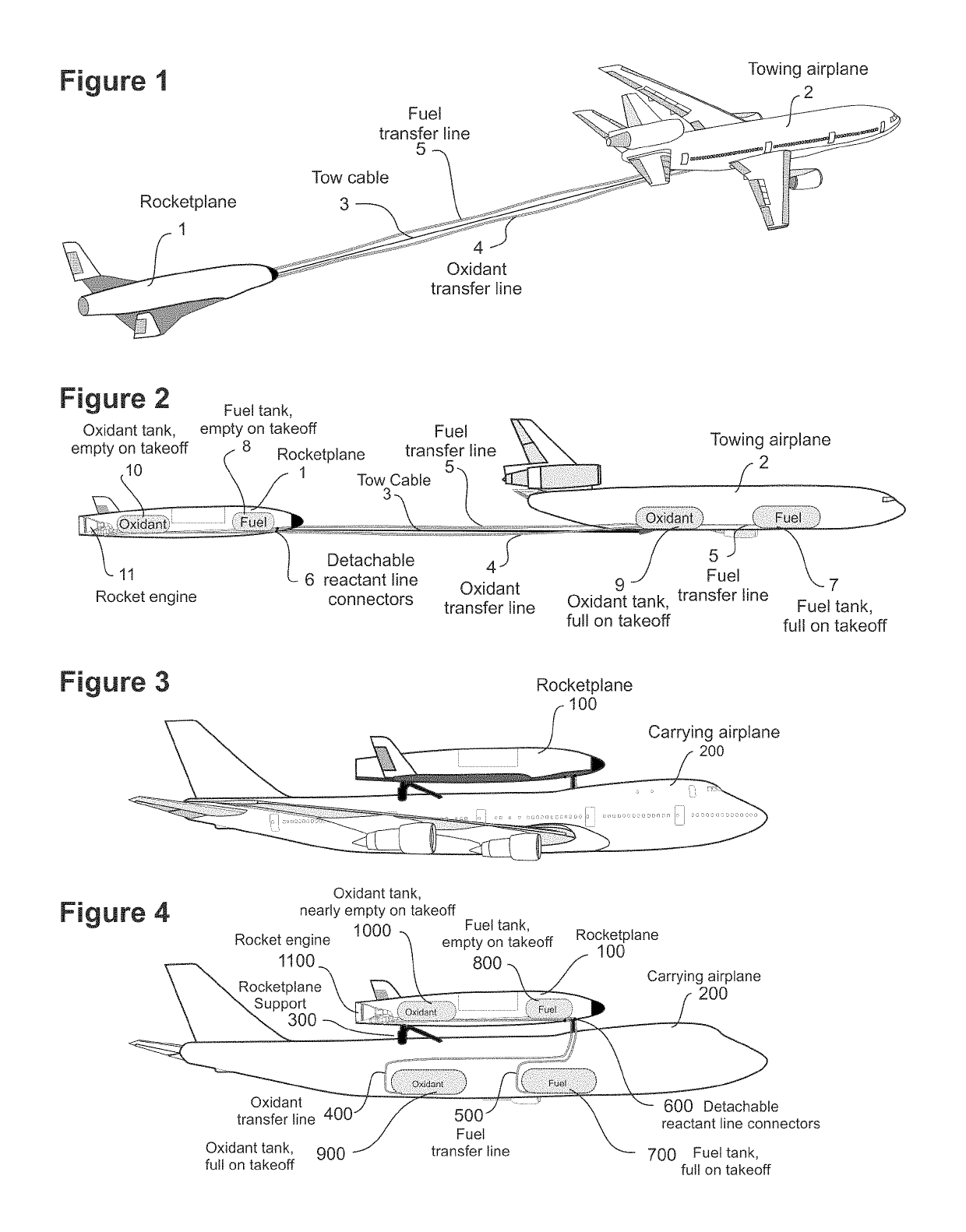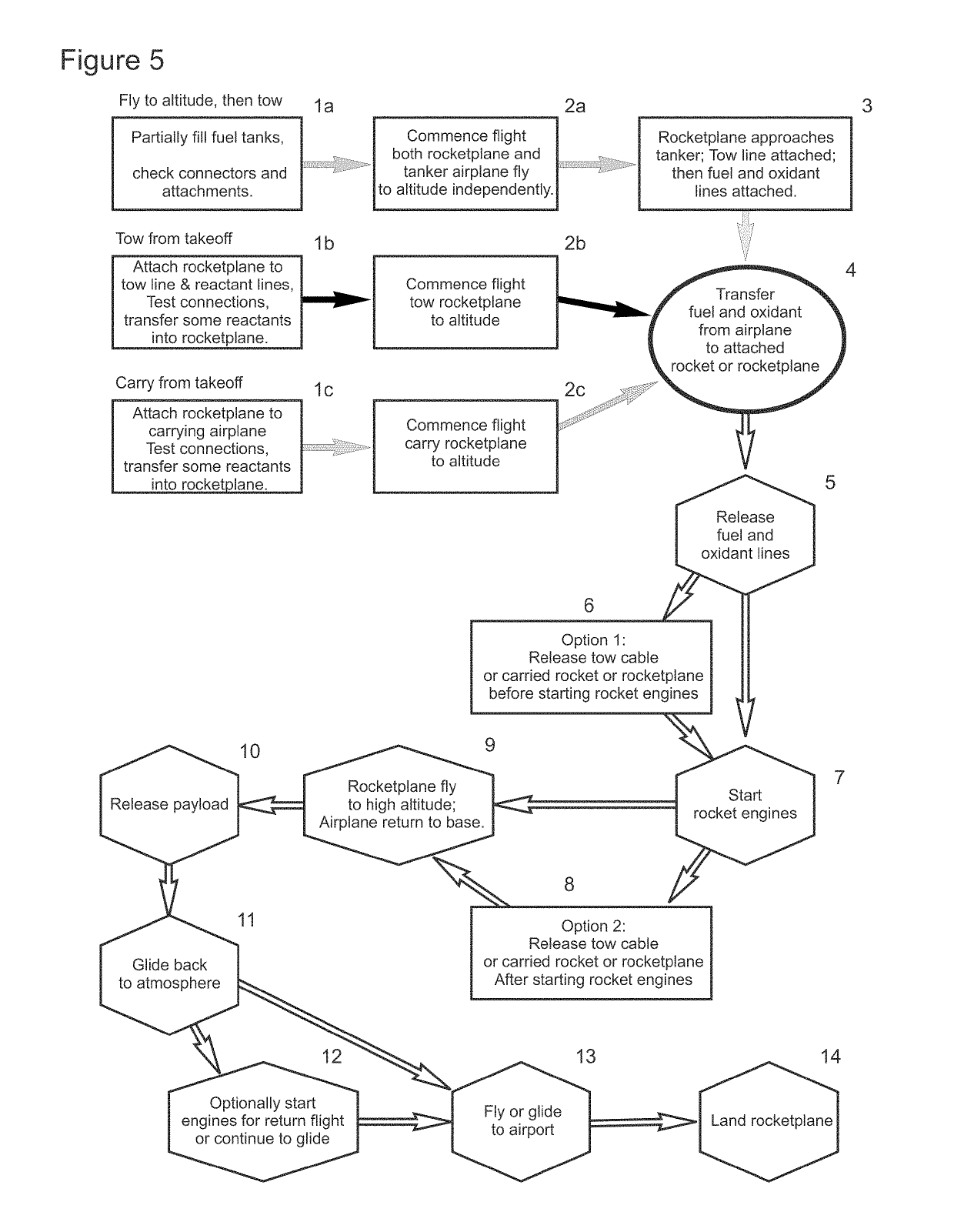In-flight transfer of reactant from a towing or carrying airplane to an attached rocket or rocketplane
a technology of reactant and towing airplane, which is applied in the field of rockets, can solve the problems of failure of landing systems to land properly, failure to successfully build and fly single-stage orbit vehicle, and failure to achieve the effect of reducing the amount of fuel and oxidant required, and reducing the cost of fuel and oxidan
- Summary
- Abstract
- Description
- Claims
- Application Information
AI Technical Summary
Benefits of technology
Problems solved by technology
Method used
Image
Examples
first embodiment
[0034]FIG. 1 shows a towing system according to the present disclosure. A rocketplane 1, otherwise referred to herein as a high altitude vehicle, is attached to a towing airplane 2 with a tow line or cable 3 strong enough to enabling the pulling of the unpowered rocketplane without breaking. An oxidant transfer line 4 and a fuel transfer line 5 are attached between the rocketplane and the towing airplane but are not supporting or towing the rocketplane, and may be separately attached between the rocketplane and the towing airplane, or may be secured to each other or to the tow line. The transfer of fuel and / or oxidant between the towing airplane and rocketplane occurs while they are securely attached and in flight. How and when the tow line is attached is not critical to the process. The cable may be attached before takeoff, and the towing airplane tows the rocketplane from the beginning of flight, or it may be attached while in flight, in which case the towing airplane only tows th...
second embodiment
[0036]FIG. 3 shows a large airplane 200 carrying a rocketplane according to the present disclosure. In this figure, the rocketplane 100 is on the back of a carrying airplane 200 such as a Boeing 747. The rocketplane may be mounted anywhere convenient as long as it allows the carrying aircraft to fly safely. For example, the rocketplane may be mounted on top, on the belly, on a wing or under a wing of the carrying plane. The size of the rocketplane will be a major determining factor in its placement. In all variations of placement, having the fuel and oxidant tanks empty in the rocketplane prior to launch preparation allows simpler mounting and carrying of the rocketplane with minimal change in the center of gravity for the carrying airplane.
[0037]FIG. 4 shows a cross section of the carrying airplane 200 and the carried rocketplane 100. The rocketplane 100 is attached to the carrying airplane 200 with supports 300 able to carry the rocketplane safely and to release the rocketplane wh...
PUM
 Login to View More
Login to View More Abstract
Description
Claims
Application Information
 Login to View More
Login to View More - R&D
- Intellectual Property
- Life Sciences
- Materials
- Tech Scout
- Unparalleled Data Quality
- Higher Quality Content
- 60% Fewer Hallucinations
Browse by: Latest US Patents, China's latest patents, Technical Efficacy Thesaurus, Application Domain, Technology Topic, Popular Technical Reports.
© 2025 PatSnap. All rights reserved.Legal|Privacy policy|Modern Slavery Act Transparency Statement|Sitemap|About US| Contact US: help@patsnap.com


